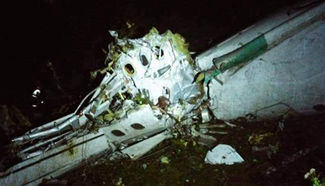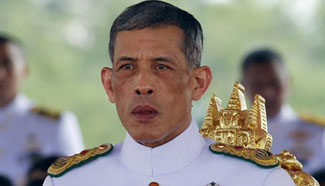WASHINGTON, Nov. 28 (Xinhua) -- U.S. researchers said Monday they may have found the cause of visual problems affecting many astronauts who serve on lengthy missions in space.
The so-called visual impairment intracranial pressure (VIIP) might be related to volume changes in the clear fluid that is found around the brain and spinal cord, according to results presented at the annual meeting of the Radiological Society of North America (RSNA) in Chicago.
Over the last decade, flight surgeons and scientists at the U.S. space agency NASA have seen visual impairments in nearly two-thirds of astronauts after long-duration missions aboard the International Space Station (ISS).
The astronauts with VIIP had blurry vision, and further testing revealed, among several other structural changes, flattening at the back of their eyeballs and inflammation of the head of their optic nerves.
"People initially didn't know what to make of it, and by 2010 there was growing concern as it became apparent that some of the astronauts had severe structural changes that were not fully reversible upon return to earth," study lead author Noam Alperin, professor of radiology and biomedical engineering at the University of Miami, said in a statement.
Scientists previously believed that the primary source of the problem was a shift of vascular fluid toward the upper body that takes place when astronauts spend time in the microgravity of space.
But researchers led by Alperin recently investigated another possible source for the problem: cerebrospinal fluid (CSF), the clear fluid that helps cushion the brain and spinal cord while circulating nutrients and removing waste materials.
The CSF system is designed to accommodate significant changes in hydrostatic pressures, such as when a person rises from a lying to sitting or standing position, but in space the system is confused by the lack of the posture-related pressure changes, Alperin said.
Alperin and colleagues performed high-resolution orbit and brain MRI scans before and shortly after spaceflights for seven long-duration mission ISS astronauts, and compared results with those from nine short-duration mission space shuttle astronauts.
The study showed that, compared to short-duration astronauts, long-duration astronauts had significantly increased post-flight flattening of their eyeballs and increased optic nerve protrusion.
Long-duration astronauts also had significantly greater post-flight increases in orbital CSF volume, or the CSF around the optic nerves within the bony cavity of the skull that holds the eye, and ventricular CSF volume -- volume in the cavities of the brain where CSF is produced.
The large post-spaceflight ocular changes observed in ISS crew members were associated with greater increases in intraorbital and intracranial CSF volume.
"The research provides, for the first time, quantitative evidence obtained from short- and long-duration astronauts pointing to the primary and direct role of the CSF in the globe deformations seen in astronauts with visual impairment syndrome," Alperin concluded.
Identifying the origin of the space-induced ocular changes is necessary, he said, for the development of countermeasures to protect the crew from the ill effects of long-duration exposure to microgravity.
"If the ocular structural deformations are not identified early, astronauts could suffer irreversible damage," Alperin noted. "As the eye globe becomes more flattened, the astronauts become hyperopic, or far-sighted."










